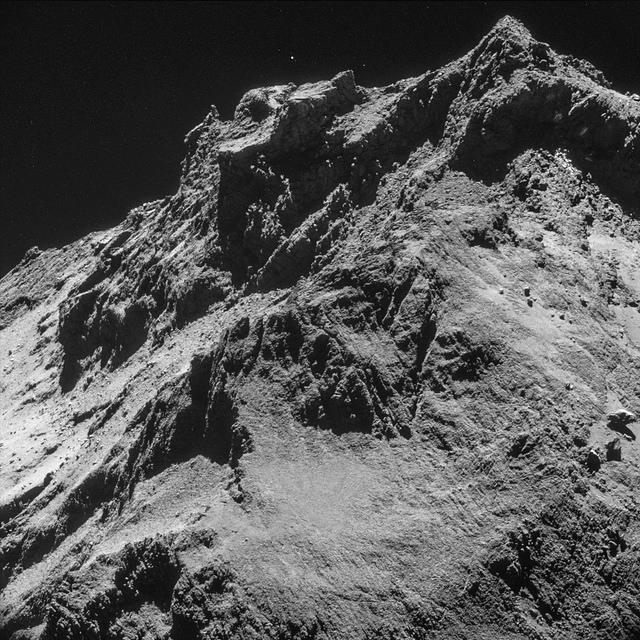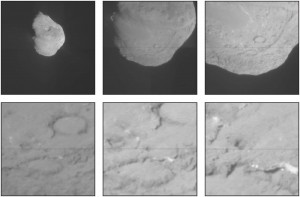Humanity’s second-ever comet landing happens today when the European Space Agency’s Rosetta spacecraft (technically, the Philae lander) touches down on the comet Churumov-Gerasimenko at 16:00 UTC, or 11 a.m. Eastern, 7 a.m. Pacific to you civilians. Tune in to the ESA website for live shots and people speaking in heavy accents.
Wait, second-ever landing?
The first landing happened more than nine years ago at somewhat higher speed, when Deep Impact’s “impactor” (not quite as poetic, but certainly evocative of its existential purpose) touched down on the comet Tempel 1. Philea is to land at 2.2 mph and needs grappling hooks so as not to bounce right back off; the impactor landed at 23,000 mph and vaporized, which was the idea.
Rosetta actually launched nearly a year before Deep Impact (on March 2, 2004; Deep Impact launched on Jan. 12, 2005). Deep Impact flew straight (or elliptically, fine) to its destination; Rosetta took an incredibly discursive route to its target, Spirographing (hit “show full paths at the bottom and then play, lower left) through the inner solar system through a series of gravity assists swinging it back by Earth, Mars and a couple of asteroids before settling into orbit around the comet itself, which is damn near gravity-free in celestial-body terms. I will never find it anything short of incredible that people can figure out these trajectories years in advance, convert them to rocket and hydrazine pulses, and pull alongside a distant planet or comet.
So today’s the big day, but regardless of what happens with Philae, they folks at ESA have already taken the best photos of a comet we’ve ever seen. Previous to this, the best close-up we had was from the impactor’s little camera, the last of these of which was shot 23 miles above Tempel 1’s the surface three seconds before the camera atomized.
The shot atop this post was taken about six miles above the surface of Churumov-Gerasimenko (should be a soft-rock band) by the Rosetta navcam. That’s airline cruising altitude. The Rosetta Flicker gallery is worth checking out. Haunting black-and-whites that could have been shot somewhere high in the Rockies on a moonlit night. But these were taken more than 300 million miles away, by a spacecraft that spent the last decade tooling across 4 billion miles of space in discursive pursuit of its charcoal-black partner. Assuming the landing goes well, Philae will do a bit of science and then spend a billion years clinging to the snowy dirtball like some bug hitching a ride on an RV.


